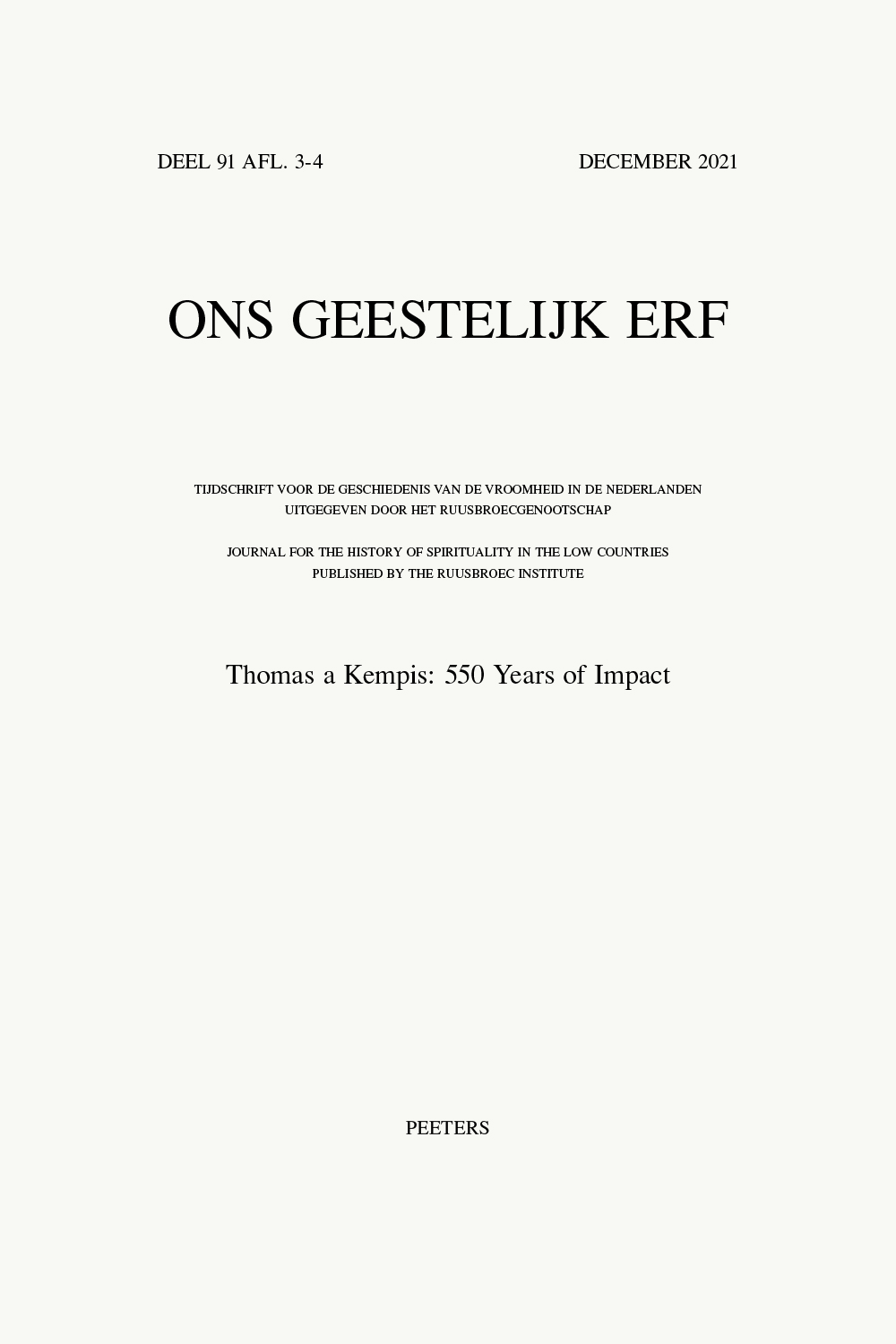 previous article in this issue previous article in this issue |

Preview first page |
Document Details : Title: Tauler, Herp and the Changing Layers of Mobility and Reception in the Low Countries (c. 1460-1560) Author(s): DLABAČOVÁ, Anna Journal: Ons Geestelijk Erf Volume: 84 Issue: 1 Date: Maart 2013 Pages: 120-152 DOI: 10.2143/OGE.84.1.2975526 Abstract : The intrinsic relationship between Tauler sermons and the comprehensive mystical guide Spieghel der volcomenheit, written between approximately 1455 and 1460 by the observant Franciscan friar Hendrik Herp, was recognized by readers and compilers of manuscripts. Texts by Tauler and Herp were combined in two Middle Dutch manuscripts. In the first manuscript, Heverlee, Norbertijnerabdij Park: 8 (c. 1460-1500), Tauler plays a dominant role and is considered the authority, while a selection from Herp is neatly incorporated within a corpus of fourteenth-century texts by Tauler and other writers related to the Gottesfreunde literature. In the second manuscript, Ghent, University Library: 1351 (c. 1550-1575), the roles are reversed: Herp no longer maintains his reputation among 14th-century (and older) mystics and their literature, and Tauler’s role is also significantly diminished. Instead, a major role is now reserved for another group of mendicant preachers, this time from Herp’s order: the observant Franciscans. The study of these two Tauler-Herp manuscripts shows that the concomitant transmission of texts by Tauler and Herp was determined by a number of factors: the perceived connection between the two authors, the milieu in which a manuscript was written, the changes within the transmission of their texts (for example the editing and translating activities carried out by the Cologne Carthusians) and obviously other historical circumstances, such as the rise of the (Dutch) observant Franciscans as important figures within the Counter-Reformation alongside the Carthusians. |
|


